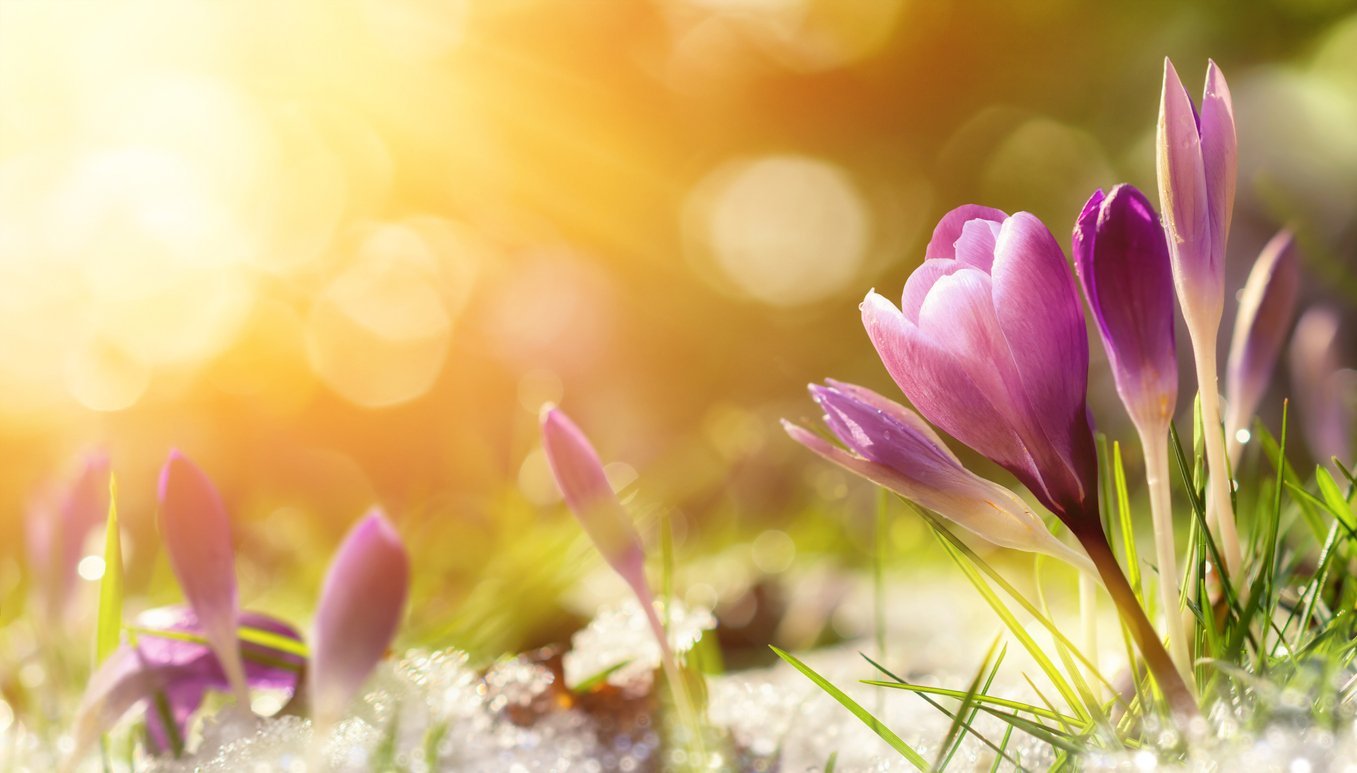As Above, So Below... Back Into the Light We Go!
From beneath it rises.
The first plants that break the surface of the snow between Imbolc (February 1) and Ostara (or Spring Equinox, March 20) are often those that rise from energy contained within a bulb. There is a certain “as above, so below” magick contained within the unassuming pods of energy that we sow into the ground in late autumn. We place them into their earthen beds and cover them up, a small treasure, so that one day they will rise from beneath the soil and bloom with unparalleled arrays of color and fragrance, feeding the early pollinators and wildlife that so desperately need nourishment after a long winter’s sleep. The tulips, crocuses, daffodils, lilies, and other early bloomers color the previously drab landscape and give us a sense of relief that we have indeed made it through another winter.
The queen of the underworld.
This rise from below into the above truly marks our ascent out of the underworld of the year. The journey of the bulb is very much like that of Persephone. In Greek mythology, the story of Persephone being kidnapped by Hades, ruler of the underworld, functions as the personification of the vegetation that disappears into the earth when sown, and sprouts from the earth in spring. Her mother Demeter, the goddess of harvest and agriculture, causes the earth to remain cold and barren for the months that she is without her daughter. In spring, Persephone returns to her mother, and the land comes back to life. Not only does the annual mother/daughter reunion explain the changing seasons and the departure and return of the light, it also symbolizes death and the regeneration of life.
The energy within… and without.
Botanically speaking, a bulb is a short stem with fleshy leaves, known as scales, and it functions as a food storage organ during the plant’s dormancy. At the center of the bulb, is a shoot that will eventually break through the surface and flower. Bulbous plant species have both a vegetative and reproductive stage. The bulb grows to its full size, during the vegetative state and begins to flower during the reproductive stage. After flowering, the foliage remains, allowing photosynthesis to continue, and the energy can go back into the bulb. Now, at this point, the plants we cultivate for their flowers only may begin to return to their dormancy. However, there are certain plants that we actually harvest the bulbs of. One popular variety of edible bulbs are onions. The unassuming onion tends to be a cooler spring crop, with edible shoots rising to the surface in the early spring. Of course, we do love to use the whole plant in this case, and while all the energy is still within the bulb of the onion, we usually harvest them for consumption when they are sweet and flavorful. The energy within, is converted to the energy without in the form of many delicious savory recipes.
A cure for what ails you.
As is common with seasonal change, our human bodies sometimes suffer the effects of illness as our immune systems adjust to the shifts in the natural world. A really simple folk remedy for a nasty seasonal cough, taught to us by our teacher, is to slice an onion and place it within a mason jar. Cover the onion slices with really good local honey and let it sit. The sugars in the honey will begin to draw the liquid out of the onion and form a sweet, yet slightly zesty, juice that can be used to tame a cough. The bonus is that once you consume all the liquid (hopefully assisting you with ameliorating your bronchial ailments) you can throw those sweet honeyed onions on a salad or into another meal of your choice. They are quite tasty!
Late winter color.
Another common late winter/early spring bloom is the crocus (Crocus spp). The emergence of the bright flecks of color across the snowy landscape is the perfect representation of new beginnings, and their very presence reminds each of us that even at the darkest points in life, the seeds of happiness and joy are always present just beneath the surface. Appropriately, this plant is associated with Persephone, and along with violet, lilac, and hyacinth, was one of the spring flowers she was picking when she was taken by Hades. The crocus is also a traditional decoration for the pagan festivals of Imbolc and Ostara.
Crocus bulbs, planted before the ground freezes in the fall, will naturalize, meaning that they spread and come back year after year—with minimum care—for an ever-larger display. As a bonus, critters rarely bother the early buds, and many have strong perfumes that lure bees out of their hives in February or March. A beautiful and easy way to incorporate this symbolic flower into your springtime rituals is to harvest fresh crocus from your garden and dry the colorful petals. You can then sprinkle the dried petals into an herbal incense blend to burn for the Imbolc fire festival or mix them into the wax of a homemade candle to be used for an Ostara spell or ritual to celebrate earth’s reawakening.
Spring, and its resilient flora, reminds us that renewal is constant. The colors, the light, the scents, the energy all harken what is to come in the form of the sweet nectar of summer. The sense of excitement buzzes around, just like the bees, and offers us so much bounty to look forward to. As the days become longer and warmer, we are once again drawn into our gardens, to the seashore, and out into the wild, wandering world.




